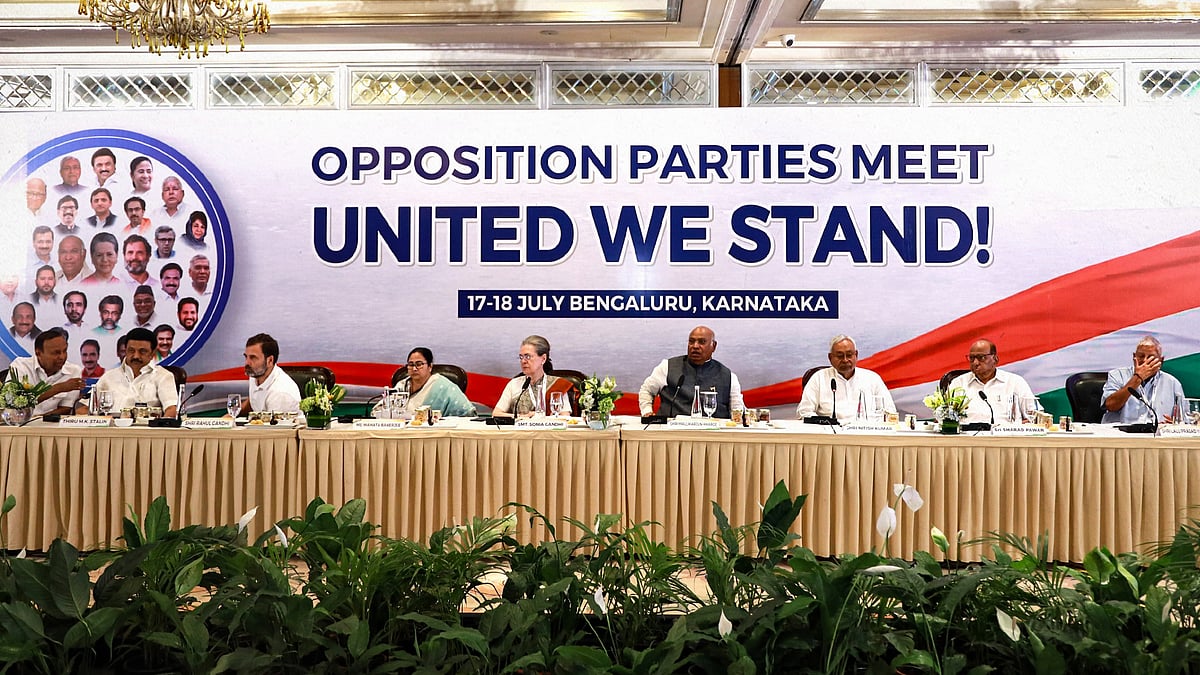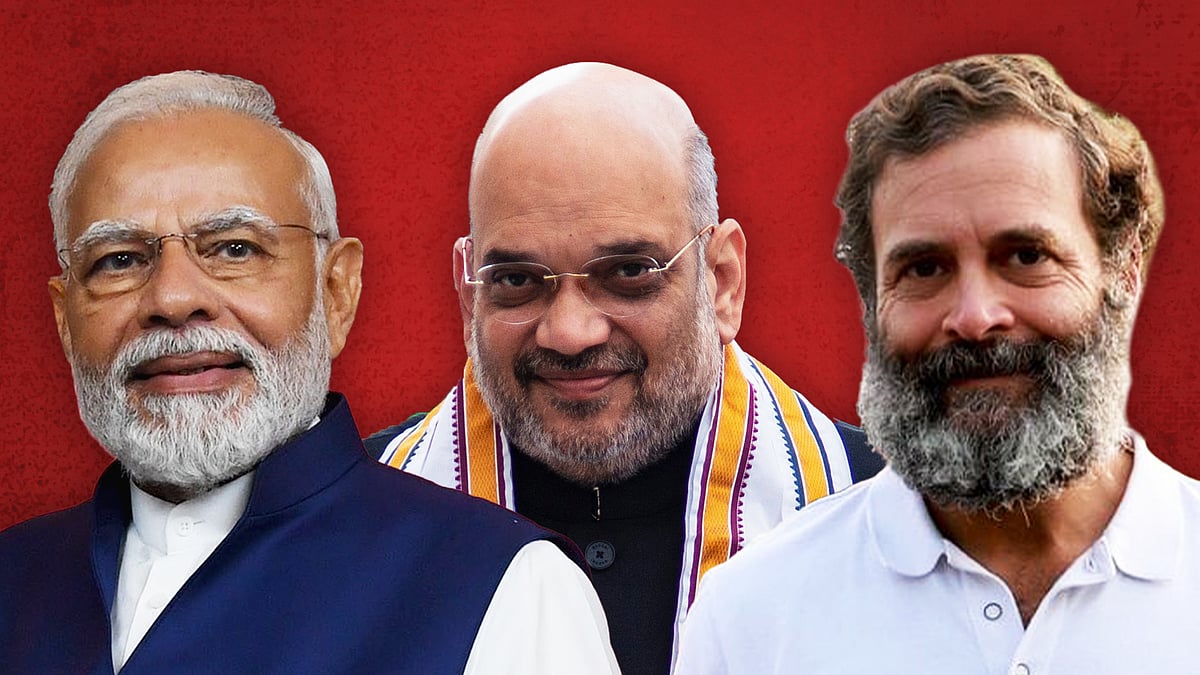State polls expose cracks in INDIA bloc. Will the drift dampen national alliance?
The alliance’s synergy now depends on how differently the parties devise their strategy for national polls in contrast to the state polls.
The ongoing campaign and the nature of contests in the assembly polls in five states – Mizoram, Rajasthan, Telangana, Chhattisgarh and Madhya Pradesh – were seen by many as an early test for the cohesiveness of the 28-parties national opposition alliance INDIA. Almost four months after it was formed in Bengaluru in July and two months after the bloc’s Mumbai meet, the teething troubles for the alliance are visible in the poll-bound states.
Far from working out any seat-sharing plan, the bloc allies find themselves as rivals in the fray. If these state polls are seen as the dry run for the bloc’s target of striking a synergy for the Lok Sabha polls next year, will the divergent notes of the allies in the state polls prove to be a dampener for building a sturdy national alliance of the opposition parties? But any answer to this question depends on how differently these parties devise their strategy for national polls in contrast to the state polls.
In the last two weeks, murmurs of discontent can be heard not only from those constituent parties of the INDIA bloc which are contesting the state polls, but also the parties outside the fray.
JDU leader and Bihar chief minister Nitish Kumar, for instance, questioned the Congress’ focus on the state polls. He argued that the party had sidelined the work on building the INDIA alliance to a stage of stagnation. As the pivot of the bloc, Congress downplayed the criticism as Bihar CM’s eagerness to dislodge the incumbent regime at the centre, and added that the state polls were important for the alliance too, especially as it is only six months before the national elections.
But such reasoning doesn’t offset the anxieties of regional leaders like Nitish, one of the few early initiators of the alliance. The larger question is how big will the Congress find itself vis-a-vis other INDIA allies on December 3 when the results of the five states polls are declared.
This has to be seen in the context that the Congress is contesting to retain power in Rajasthan and Chhattisgarh, sees a reasonable chance to form a government in Madhya Pradesh, and is aiming to unseat the incumbent BRS in Telangana.
To add to that, it would also try to make some presence felt in the northeast by wresting back Mizoram, a state which it ruled for almost three decades before losing it in the 2018 polls.
All this implies that the state-level stakes for Congress aren’t in any way insignificant. Even if one keeps aside the arguments about the role of state polls as propellants for the national challenge next year, the Congress has reasons to see them as important polls in their own right.
More significantly, if the Congress manages to retain two states and add one more to its kitty, its position as the spearhead of the INDIA alliance will be further strengthened. This is something that allies know as much as the Congress party. While its centrality in the INDIA alliance has been evident, the party will still try to secure the primacy as the national challenger to the current BJP-led NDA regime in the centre.
The match up in three of the five poll-bound states — Madhya Pradesh, Rajasthan and Chhattisgarh — also present an arena of its direct clash with the BJP. In view of the emergence of the regional forces against the BJP and the grand old party’s shrinking electoral appeal in the past few years, the Congress party leadership has been keen on projecting itself, if not pre-empting, as the principal occupant of the national opposition space.
While Karnataka polls win this summer gave some teeth to that claim, the party sees the need to be alert to all possibilities of asserting the claim. It reckons that with a greater hold on the power dynamics in different states, the party will have more elbow room in future negotiations in seat-sharing talks within the INDIA alliance for the Lok Sabha polls.
At the same time, the smaller parties in the alliance, with regional clout, may be wary of what greater elbow room for Congress could mean to their claims on seats as well as future power arrangements. However, such anxieties in an alliance are addressed by a realisation of the common ground, which in this case is avowedly the unseating of the current government in the centre. To that end, the Congress still remains the fulcrum of the alliance’s strategy.
In the past few weeks, the INDIA allies, however, have drawn the state poll battle-lines quite differently from the Mumbai meet script. In Madhya Pradesh, for instance, Samajwadi Party chief Akhilesh Yadav slammed the Congress, and called it a ‘clever party’ which had found only electoral interest in the issue of caste census.
The SP chief had earlier entered into a verbal duel with the MP Congress chief about the latter’s failure in stitching an alliance for the assembly polls. The SP is contesting separately in Madhya Pradesh, while AAP has fielded its own candidates in MP, Chhattisgarh and Rajasthan.
Last week, speaking at a party event, AAP chief and Delhi chief minister Arvind Kejriwal claimed to have a bigger organisation than the Congress.
In having a state-focused approach, Congress seems to be relying on local dynamics and the fact that in some states its hold was gradually chipping away by the growth of regional parties into bigger forces. This assessment, for instance, is evident in Punjab where the rise of AAP posed a challenge to the Congress support base. Moreover, the local cadre and state unit leadership aren’t comfortable with the allies being given seats where the organisation workers and leaders see a chance for themselves.
Accommodating the regional power dynamics and the input from local units also seems to have dissuaded Congress so far from any plan for seat sharing with other parties of the alliance. This is a dilemma that the party has faced not only in these poll-bound states but also in other parts of the country, where some of its current national allies are the party's electoral competitors in the region.
In its attempt to mount a national opposition challenge in 2024, INDIA leadership would be alert to the fact that divergent lines taken by its allies in state polls shouldn’t grow wide enough to become entrenched fault-lines.
It isn’t new that the dynamics and patterns of electoral competition in state politics sometimes pitch allies as rivals. But the alliance may have to navigate spells of incoherence that may at times threaten to erode some of its common ground, especially in the coming months when the seat sharing talk takes a decisive shape.
 INDIA vs Modi: Four challenges that await the Opposition’s new alliance
INDIA vs Modi: Four challenges that await the Opposition’s new alliance  Anti-BJPism, alliances, Cong ‘revival’: Here’s what will define the run-up year before 2024 big fight
Anti-BJPism, alliances, Cong ‘revival’: Here’s what will define the run-up year before 2024 big fight